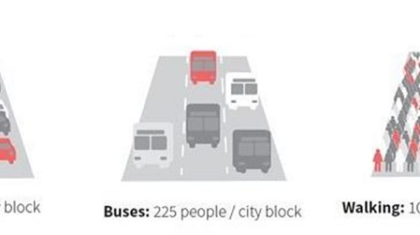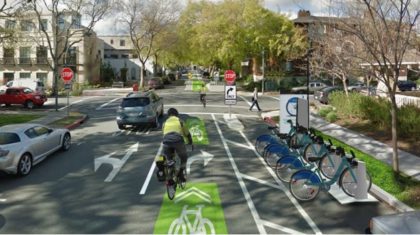
By Katie Mangle, Principal, Alta Planning + Design
There are many reasons we do what we do here at Alta Planning + Design. Most of our staff love to bike. We love to walk. We have fond memories wandering trails with our friends and family. But Alta’s mission — to create active communities — is part of a much, much larger idea. Designing and managing our cities, towns, and rural communities to allow people the use of their own bodies to get around is not just an “extra benefit,” but a fundamental characteristic of healthy communities. It is the future.

Communities with active transportation access will create healthy and resilient neighborhoods. They will empower people to make choices. They will empower people to take decisions about mobility, health, access, and community into their own hands by being able to confidently and safely make trips, get exercise, and gather with neighbors without always relying on a car.
Walking and biking used to be called the “alternative modes” of transportation. But we are entering a time in which much of the world is talking about, investigating, and embracing options to walk and bike as a central component to creating and managing a healthy community. In many ways, the planning, design, advocacy, and use of active transportation is inching towards the mainstream for how many of our cities are being shaped.

The inherent value of active transportation is becoming the norm in many fields, including economic development, urban design, real estate, traffic engineering, public health, and corporate recruiting. This isn’t the case everywhere, but there are strong trends leading in this direction, such as:
- Demographic and preference changes — according to a new study by the American Planning Association, Millennials and Boomers want many of the same things in their housing and transportation choices.
- Improving our health — America is experiencing a national health crisis, especially in youths, and physical activity is a big part of the solution.
- Increasing pedestrian safety — the US DOT is leading the charge, but the AARP is also becoming a major advocate of smart growth and pedestrian safety.
- New housing preferences — nationwide people are choosing housing based on walkability.
Increasingly, the debates are not about whether, but about how. How to make choices about the way we use space, or how we allocate funding. Those are not small debates; however, it is encouraging to see that more energy is spent debating the type of action a community can take, instead of debating whether anyone out there wants to walk or bike in the first place.

So, there is a lot of work to be done. Many conversations to be had. It is an exciting time to be expanding the dialogue to include not only the bicycle advocacy groups and bike/ped coordinators, but also health care providers, land use planners, developers, and the business community. All are looking for ways to solve their community’s problems and meet the pent-up demand from people who want to have more fun, have more transportation choices, feel safer when they walk around, connect more with their environment, and sometimes just enjoy paying less for parking or not owning a car at all.
There are many problems facing our communities, but creating active ones is a powerful, hopeful, and meaningful movement. Step by step.


